Bed Stuy Community Garden Will Stay After City Deal Reached
In a rare bureaucratic win, city officials and gardeners have negotiated a deal.

The Myrtle Village Green, a beloved community garden, has been saved from an uncertain future. Photo via Colleen Redmond
By Kirstyn Brendlen, Brooklyn Paper
Since it opened in 2012, the stewards and members of the Myrtle Village Green have known they might someday need to start again from scratch.
The city-owned plot of land it sits on was slated eventually to be developed for much-needed affordable housing, and the deep-rooted garden would have to move.
But, in a rare bureaucratic win, city officials and gardeners have negotiated a deal. The Green will stay where it is, and housing will be constructed just around the corner, on the same large piece of city-owned land.
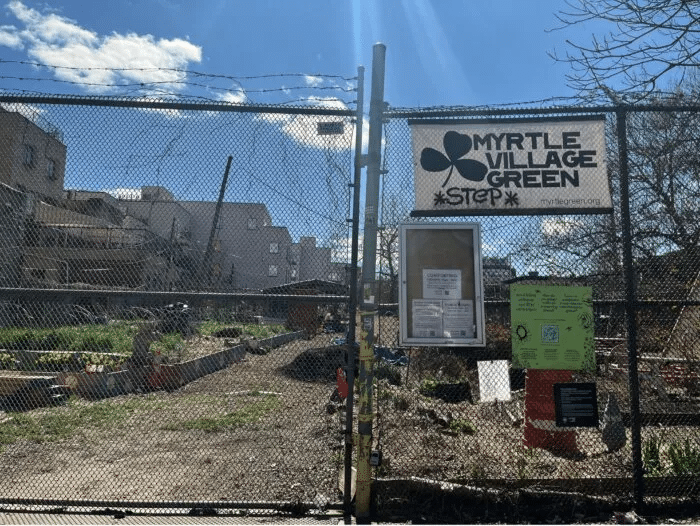
“Oftentimes we are frustrated with government at all levels not demonstrating the care and compassion that we hoped for in our neighborhoods,” said Council Member Lincoln Restler, who helped facilitate the agreement. “This is just an example that’s 100 percent to the contrary.”
A community garden is born
The city took the land by eminent domain in the 1970s for the construction of a massive tunnel that connects New York City to its water supply upstate.
By the ’90s, construction was wrapped up, but the plot sat empty and disused until about 2011, when neighbors approached Restler, then a District Leader, about turning it into a garden.
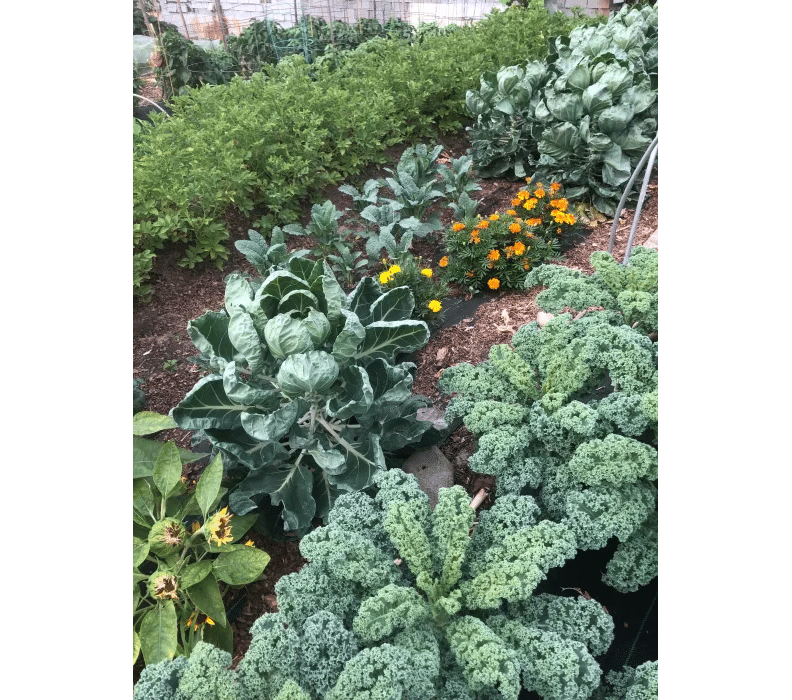
Restler and then-Council Member Letitia James worked with the city’s Department of Environmental Protection, which owns the land, and the Department of Housing Preservation and Development to come to an agreement.
“They persuaded DEP to open the gate for us,” said Shawn Onsgard, a longtime member of the Myrtle Village Green and the leader of its compost program. “It was nothing. Underneath these layers of leaves and compost we’ve installed, there’s blacktop.”
Slowly, the garden team built up to what they have now.
Even on a cold mid-March day, the Green was filled of signs of spring — daffodils bloomed along the fences; hardy crops like garlic, onion, and kale sat nearly ready for picking; and locals dropped off compost to be added to the Green’s giant compost pile.
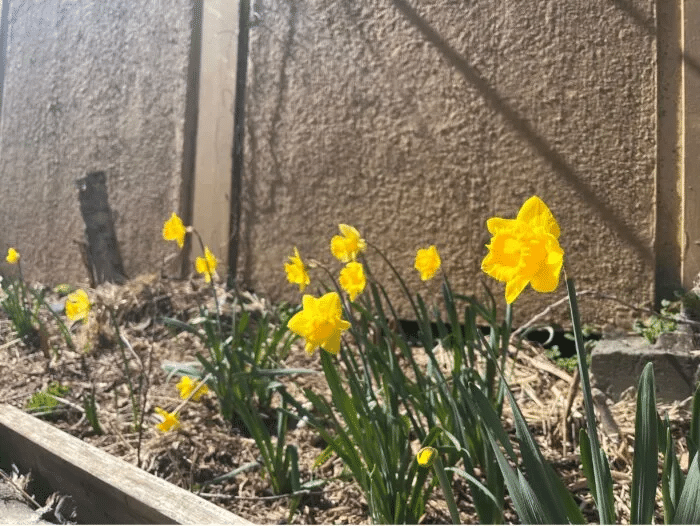
About 250 people are members of the garden, Onsgard said. Many use small private beds to grow produce for their families, and still more work together with neighbors in the shared beds to grow food and flowers. Every year, more than 2,500 pounds of fresh produce is plucked from the Green.
“With almost no money and lots of love and shared labor, [we have] built all the beds, brought in soil from donated sources and made soil through compost, and here we are,” Onsgard said.
Protecting a beloved space
At the end of 2023, garden stewards and Restler — now a local council member — got word that the city was ready to start planning construction at 638 Myrtle Avenue.
“There was always an understanding that housing was the long-term plan for this parcel, but in the ensuing 13 years, Myrtle Village Green has become a model community garden, and one of the most actively used and exceptionally diverse gathering spaces in our community,” Restler told Brooklyn Paper.
While the Green was promised a new location, the existing infrastructure would have to be taken down and removed, and some members worried the city wouldn’t be able to make good on its promise to relocate it — leaving them permanently without a garden.
In Bed Stuy, there aren’t a ton of places for the average Brooklynite to really get their hands dirty and spend time outdoors, Onsgard said.
“Grandparents come and like, nap in the sun, and then they hang with their grandkids when they get out of school, and there’s nowhere else you can do that,” he said.
Among the shared and private beds are the Bangladeshi and Spanish language community beds, where gardeners tend to culturally specific veggies and herbs.
“Among the things I’m really proud of is how diverse our garden is,” Onsgard said. “I like to describe it as, we have shovel diplomacy here. If you give people, like, a heap of dirt to shovel, or a project to work on together, all of the sudden you’re having a conversation, you’re learning things from each other, you’re sharing recipes. It’s like a glue that connects the neighborhood together.”
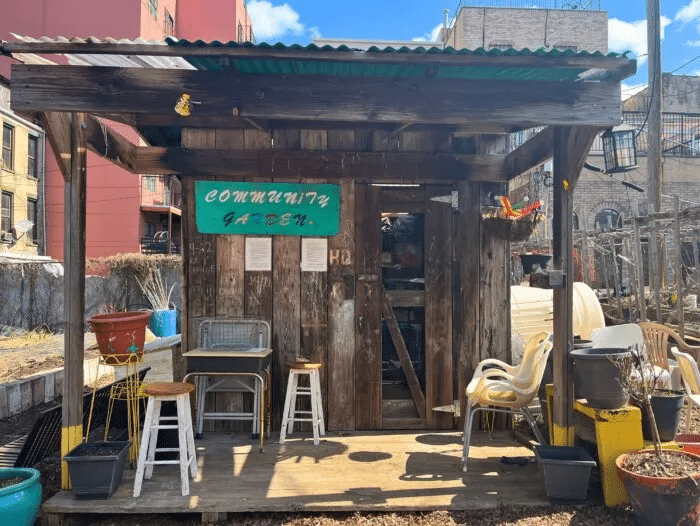
Members started spreading the word of the potential move, and received an outpouring of support from the community and local politicians. They knew affordable housing was needed in the community, but hoped there could still be a way to protect the garden — and there was.
“I am genuinely and deeply appreciative to the staff at the agencies who were willing to take another look at this project and figure out a way to make it work for everybody,” Restler said. “That’s not how bureaucracy normally works.”
Moreom Perven, one of the lead volunteers on the Bangladeshi community bed, has been a member of the garden for more than 10 years, she said, about as long as the Bangladeshi bed has existed.
Bed Stuy has a thriving Bangladeshi community, she said, but finding vegetables and herbs used in popular Bangladeshi dishes is difficult – and expensive.
“Always I was feeling bad that I don’t have those vegetables here,” said Perven, who lived with family in Brooklyn and Queens when she first moved to the U.S. “So I saw [gardening] was the way I could meet my family’s needs, my needs. And I get us all organic food, vegetables. That forced me to get into it.”
Around 15 families work together to tend and harvest bitter melon, amaranth, okra, snake gourd, pumpkins, fennel, and more, she said. Throughout the season, the gardeners freeze what they don’t use so they can keep eating the familiar produce throughout the year instead of traveling to far-flung grocery stores to buy the same veggies for up to $15 per pound.
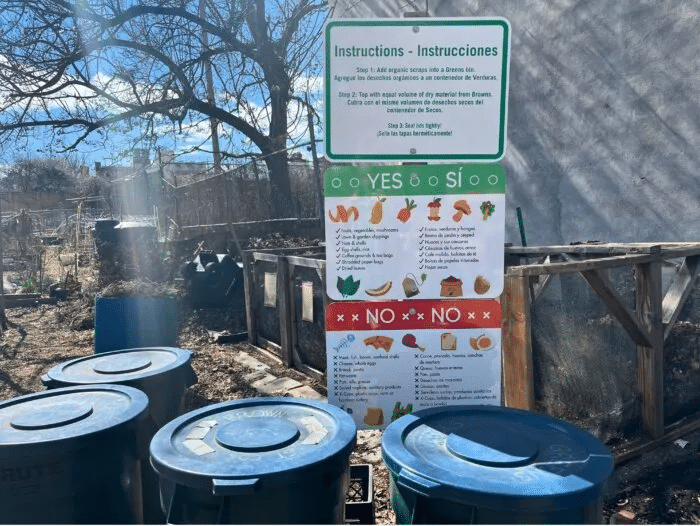
Before she came to the Myrtle Village Green, Perven was part of another local community garden — and said gardening comes naturally to Bangladeshi immigrants.
“Bangladeshi people, they’re very involved in the garden,” she said. “However they get space, wherever they find the smallest space, they always love to grow.”
With spring fast approaching, seedlings are already getting started in pots and containers in various apartments so they’re ready when the warm weather finally arrives in Bed Stuy.
“If something happened, it would be huge loss for the community,” she said.
Green Thumb gets a new meaning
The agreement has yet another upside: DEP is working to transition the Myrtle Village Green to a GreenThumb garden overseen by the Department of Parks and Recreation — which will open the doors for more programing, funding, and possibilities.
Right now, the Green gets most of its money from $15 annual member donations, Onsgard said. They host occasional small fundraisers and have won some grants over the years, but it hasn’t always been easy to find funding.
“We get donations and we do everything on almost zero budget, if you can’t tell,” he joked.
Becoming a GreenThumb garden will “improve our services to our community and establish the permanent home for greenspace this community has been advocating for since the ’90s,” Onsgard added. “It’s something we’ve been waiting for and working for for a long time, and hopefully people keep their promises.”
Editor’s note: A version of this story originally ran in Brooklyn Paper. Click here to see the original story.
Related Stories
- Empty Lot Used as Dumping Ground Turned Into Community Garden on Stockholm in Bushwick
- Brownsville Community Garden’s 9/11 Mural Demolished, Leaving Volunteers ‘Devastated’
- It’s Time to Get Your Garden Tools Ready for the Annual Greenest Block in Brooklyn Contest
Email tips@brownstoner.com with further comments, questions or tips. Follow Brownstoner on Twitter and Instagram, and like us on Facebook.









What's Your Take? Leave a Comment